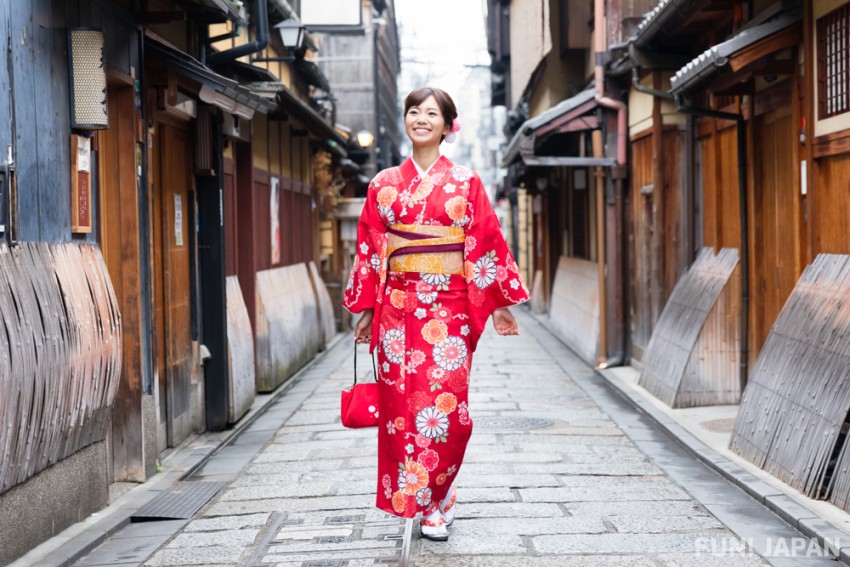
Kimono is known as the national dress of Japan. There are many types of traditional kimono. Kimono should be worn according to the occasion, such as formal or casual, just like modern clothes. Here, we will introduce typical examples for each occasion.
Traditional Kimono ~ Formal Women's Kimono~
The kimono for public ceremonies such as weddings. In terms of modern clothes, it is equivalent to dresses and formal wear.
Women have a wider variety than men. Here are some typical kimono to wear for formal occasions.
Sash-less Robe (打掛 Uchikake)
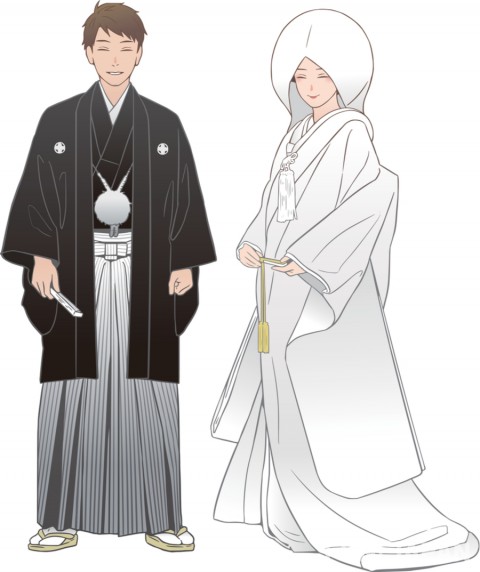
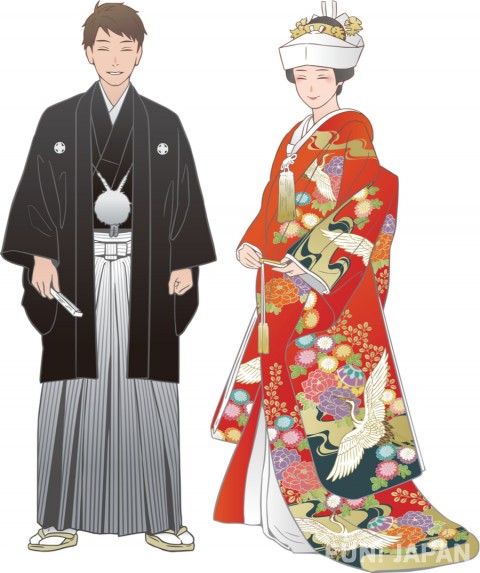
The kimono worn by the bride for her wedding ceremony. There is the "Shiromuku" (白無垢 stainless white) where the entire kimono is pure white, and "Iro-uchikake" (色打掛 colored sash-less robe) that features gorgeous colors such as red and gold. In addition to up-style hairdos, the style may also be a traditional one called Bunkin Takashimada (文金高島田). Your preferred kimono style is matched with headwear, such as Shiromuku with the Watabōshi (綿帽子 white cotton-cloth hat) and Iro-uchikake with the Tsunokakushi (角隠し literally horn-hiding hat).
Hanging Sleeve (振袖 Furisode)
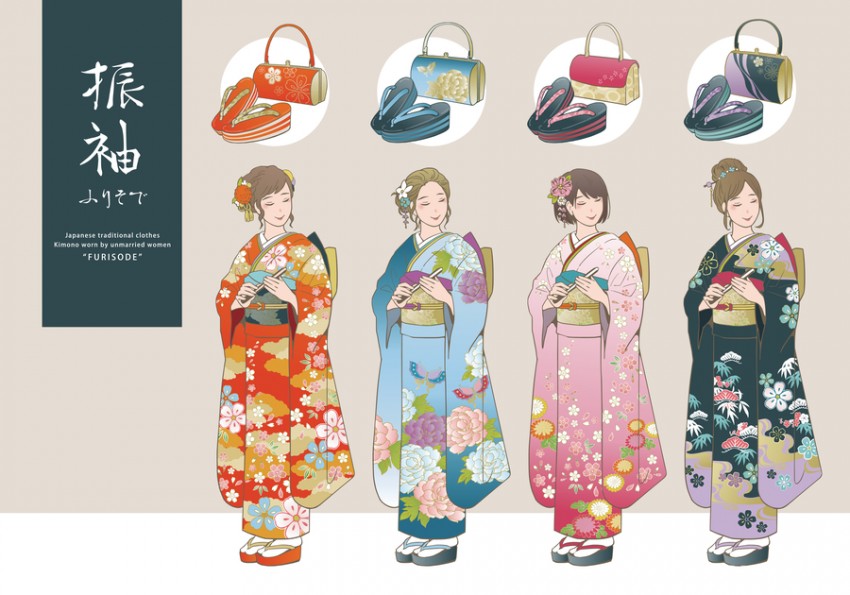
The kimono worn by young women participating in the official coming-of-age ceremony, and to attend weddings. There are three types of furisode differentiated by the length of the hanging sleeve. The longest is Ōfurisode (大振袖 large furisode), then Chūfurisode (中振袖 medium furisode) and Kofurisode (小振袖 small furisode). Ōfurisode is considered the most formal kimono. Furisode can only be worn by unmarried women. The Obi (waistband) and Zori (thonged sandals) should match the color and texture of the kimono. Hair ornaments should be similar in color to the kimono and feature fresh flowers and give a gorgeous impression.
Black Cut Sleeve (黒留袖 Kurotomesode)
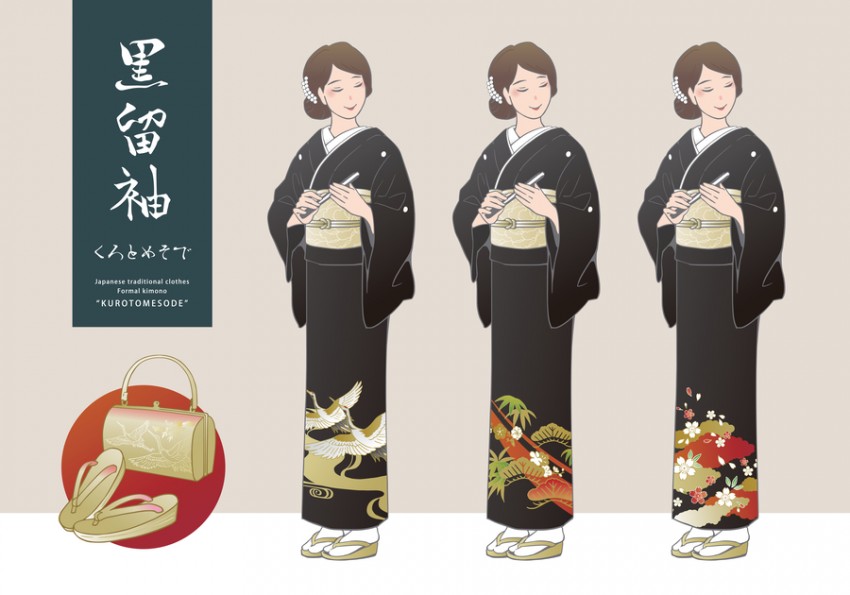
The kimono usually worn by the mothers of the bride and groom at weddings and receptions. The special characteristic is that it is almost completely black with a pattern design only below the knee to the hem. The designs are typically Japanese symbolic motifs such as cranes (live for 1000 years), pine trees (long lasting) and plum blossoms (patience and bearing). It should be noted that this kimono can only be worn by married women, while unmarried women should wear furisode and irotomesode (色留袖 colored cut sleeve). It is customary to wear gold-colored obi and footwear. Also, the sandals worn with this kimono should have some heel height. Hair ornaments should be small and elegant such as tiny fans and pearls.
Mourning Dress (喪服 Mofuku)
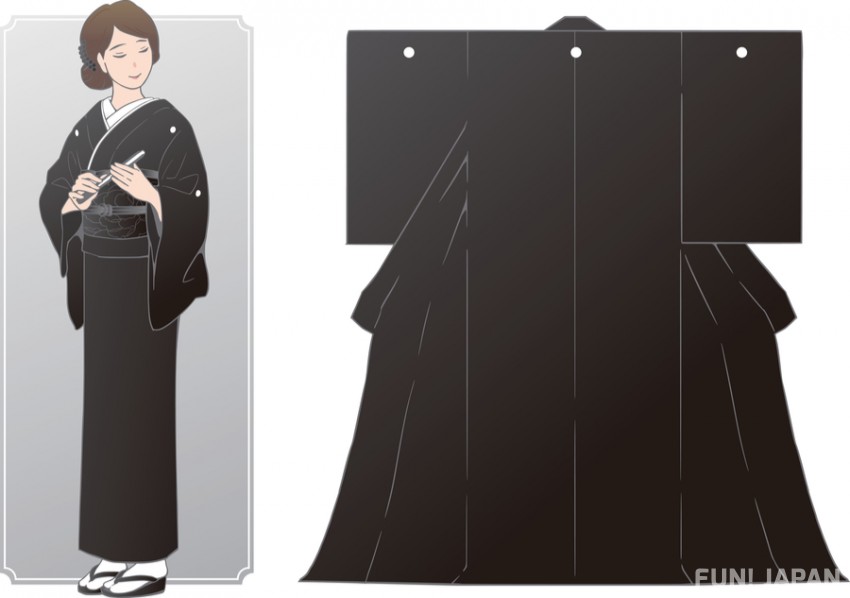
A black kimono with no pattern that women wear at funerals and memorial services. Even the obi and footwear are all black, and the hair ornaments are matched with a simple up style.
Traditional Kimono ~ Formal Men's Kimono~
Now let's take a look at the men's kimono worn for formal ceremonies. In terms of modern clothes, it is equivalent to the tuxedo.
Men's / Black Two-layered Kimono with Jacket and Five Family Crests (男性/黒羽二重五つ紋付)
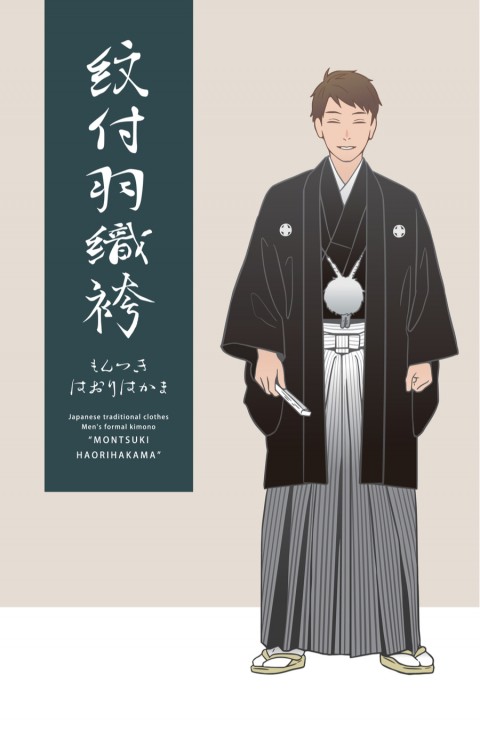
Kimono worn for formal occasions are haori (羽織 thigh-length kimono-style jacket) and hakama (袴 pants or skirt-like lower wear), called Kuroha Butae Itsutsu Montsuki (黒羽二重五つ紋付). The feature of this kimono is that there are five family crests on the back, backside of both sleeves, and on both side of the chest. Tabi (split-toe socks), often pure white are worn and with zori .
Traditional Kimono ~ Semi-formal Women's Kimono~
The kimono that can be used for celebrations such as entrance ceremonies and participating in weddings ceremonies. In terms of modern clothes, it is equivalent to a suit.
There are many types of semi-formal kimono just like the formal ones. Here we will Introduce typical kimonos worn in semi-formal occasions.
Colored Cut Sleeve (色留袖 Irotomesode)
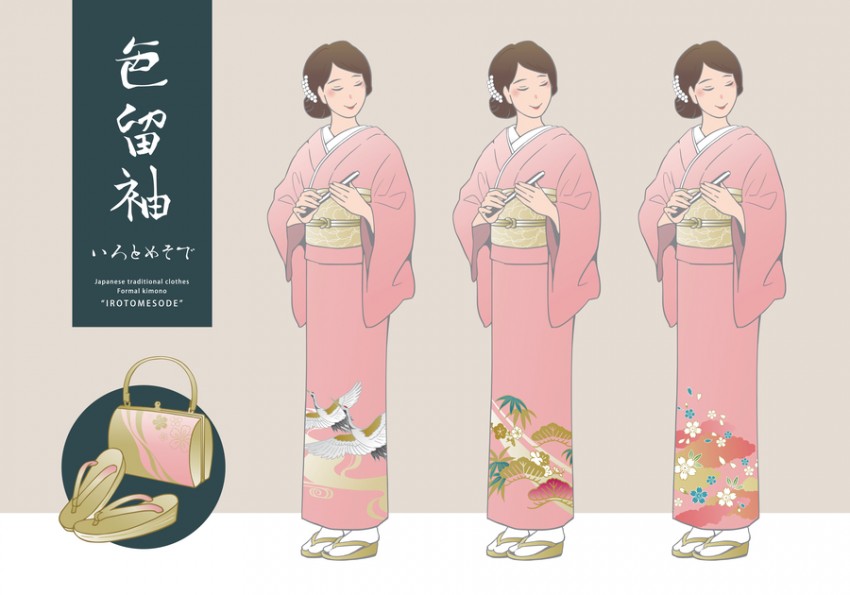
The kimono worn when attending a wedding as a relative, or attending a party. The defining characteristic is that the upper body is plain with the motifs confined to the part below the knee to the hem. There are many color variations such as dusty pink and cool blue to pale purple. The obi is usually colored gold or silver or the same color as kimono. Zori sandals should have a high heel, and the thong and base should be the same color, such as gold or white, and light colored enamel. Hair ornaments should be small and elegant such as tiny fans and pearls.
Visiting Dress (訪問着 Hōmongi)
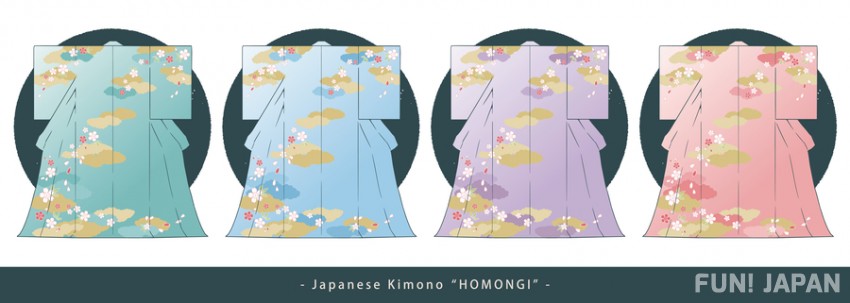
The kimono worn when attending ceremonies such as children's entrance and graduation ceremonies, or weddings as invited guests. With these kimono, The special the motif pattern design is incorporated on the upper body such as shoulders and chest as well as the hem. The obi differs depending on the occasion; for example gold for a wedding and similar colors to the kimono for a graduation ceremony. Zori also differ depending on the occasion.
Traditional Kimono ~ Semi-formal Men's Kimono~
Now let's look at men's semi-formal. This is equivalent to a business suit and tie.
Colored Kimono with Family Crests, Jacket and Lower Garment (色紋付羽織袴 Iro Montsuki Haorihakama)
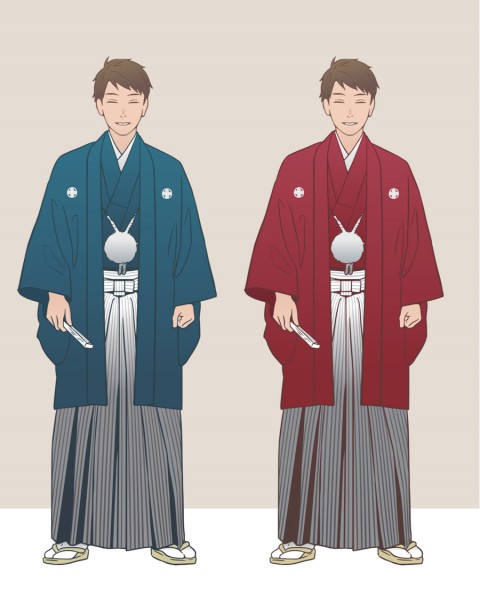
This kimono is mainly worn at wedding receptions. In this version, the color of the kimono and haori is not black and the number of family crests is one or three rather than five. Tabi and zori are worn on the feet.
Traditional Kimono ~ Casual Women's Kimono ~
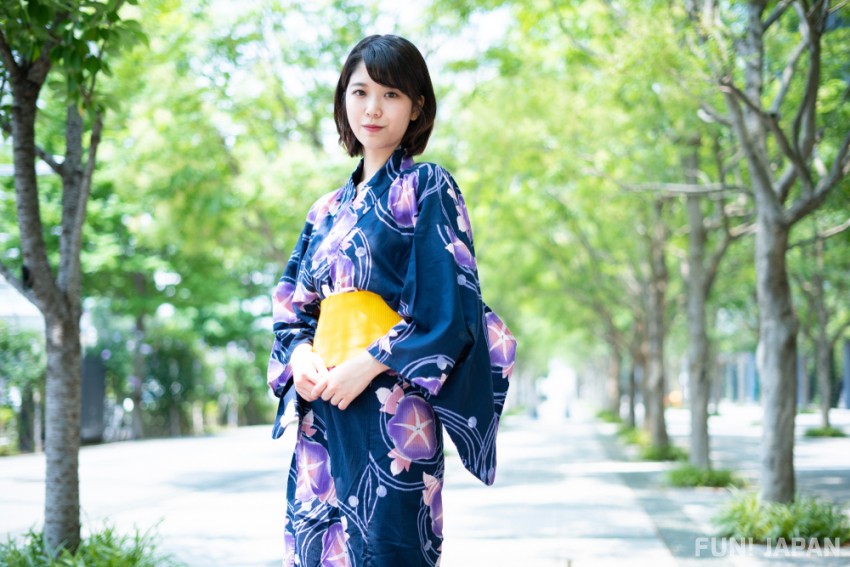
The kimono worn in daily life. In term of modern clothes, it is equivalent to a blouse or polo shirt.
The "Komon" (小紋 repeated patterned) kimono, which is a pattern-dyed kimono with repeated patterns throughout, and the "wool" and "cotton" kimono, which are easy to clean, are perfect for everyday shopping and walking around the city. A yukata for summer is another variant of the casual kimono.
Traditional Kimono ~ Casual Men's Kimono ~
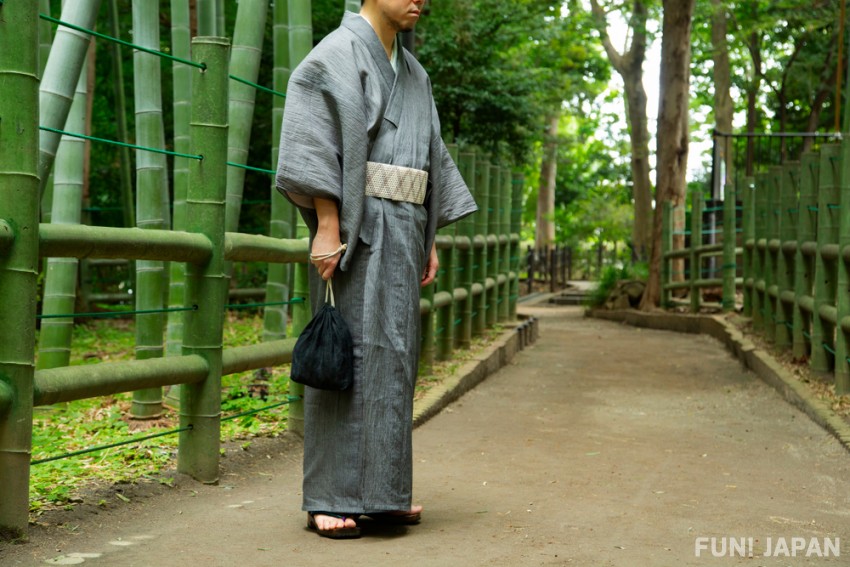
Similarly, in term of modern clothes, this is equivalent to open-necked shirts and polo shirts.
Casual kimonos include "Tsumugi" (紬 thread patterned) kimonos that can be worn without wearing a hakama (lower garment), "wool" kimonos that are easy to clean, and "yukata" in the summer.
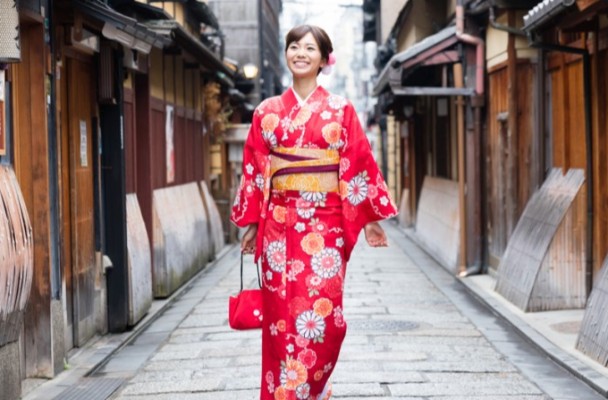
Comments